Green Earth FAQs
Scroll down to read about the advantages with GreenEarth and answer some of the more frequently asked questions. Discover why existing drycleaners are converting to GreenEarth and new operators are selecting it as their cleaning solution of choice.
What is GreenEarth?
GreenEarth is the brand name for liquid silicone solution, decamethylpentacyclosiloxane, or D5. It is an exclusive, patented dry cleaning process whose name and logo are trademarked (there are no “generic” forms of GreenEarth).
Why is it better for the earth?
About ninety percent of dry cleaners use a solvent known as perc, short for perchloroethylene, a chlorinated hydrocarbon classified by the US EPA as a Toxic Air Contaminant. Use of perc is highly regulated because indiscriminate disposal of perc can seriously contaminate soil and groundwater, and exposure can irritate eyes, nose and throat, as well as cause headaches, dizziness or fatigue. Perc is also classified by the US EPA as a possible to probable human carcinogen.
In contrast, GreenEarth is so safe the US EPA has chosen not to regulate it, which means it safe for the air, water and soil. What’s more, the GreenEarth solution is not a VOC , it’s non-toxic, and non-hazardous. If you wanted to, you could safely rub it on your skin. In fact, you probably already do. That’s because GreenEarth’s solution is pure liquid silicone—essentially liquefied sand. It’s the same base ingredient found in everyday shampoos, soaps and lotions. Plus, when you spill or dispose of GreenEarth solution, within days it safely degrades back into its three natural components: sand (SiO2), water and carbon dioxide.
Why is it better for clothes?
GreenEarth solution is different from dry cleaning solvents in that it is chemically inert, meaning it does not interact with the textile fabric or dyes during the cleaning process. This helps preserve the quality of garments, eliminate problems with fabric wear or color loss, maintain a soft “hand” and prevent shrinkage. Delicate silks, suede, leather, beads, sequins, painted garments, special trims, couture, heirloom fabrics—all are no problem at all. And, unlike petroleum based solvents like perc or hydrocarbon, GreenEarth is odorless, so there is no lingering chemical smell on your clothes.
Why is it better for dry cleaners?
Dry cleaners face a difficult dilemma: it can be very expensive to purchase and operate an environmentally responsible cleaning system. GreenEarth is the one truly “green” system that is affordable for dry cleaners. The cost for a machine capable of using GreenEarth is similar to the perc machines most dry cleaners currently use. And, because it requires less labor to process and finish items cleaned in GreenEarth and can be configured to use less energy than traditional systems, dry cleaners using GreenEarth enjoy better operating efficiency. Best of all, because it produces a noticeable difference that customers can see, touch and smell, GreenEarth helps dry cleaners attract and keep loyal customers.
The only other truly “green” alternatives in dry cleaning are CO2 and 100% wet cleaning. The problem for dry cleaners, especially the small “mom and pop” cleaners who are the back bone of the industry, is that it is very difficult to make a living operating exclusively with either of these eco-friendly systems. CO2 machines can cost three times as much as the perc machines they are used to; and 100% wet cleaning systems, because they require more labor to produce and finish wet cleaned garments, are very expensive to operate with. Less than one-third of one percent of dry cleaners operates with CO2 or 100% wet cleaning.
How many GreenEarth Affiliates are there?
There are more than 1000 active licenses world wide. Locate the GreenEarth Affiliate closest to you by using the store locator on the GreenEarth Cleaning web site.
What is the regulatory outlook for dry cleaning and GreenEarth?
Dry cleaning is under increasing regulatory scrutiny. California’s ban on the use of perc and the purchase of perc machines is widely regarded as the beginning of the end of perc solvents. New Jersey, Massachusetts, New York and Toronto are all considering similar bans. If the industry continues to drag its feet when it comes to adopting “more environmentally-friendly alternatives”, regulators can be expected to grow increasingly concerned and increase legislative pressure. GreenEarth continues to meet and exceed all regulatory requirements and regulations.
Has there been much testing done on GreenEarth?
GreenEarth is the only alternative solvent to perform and openly report extensive testing on its health, environmental and safety profile. Over $30 million worth of independent testing and research has been done on D5 solvent to confirm that it is ecologically friendly and safe to use in all of its many applications, including dry cleaning. GreenEarth also underwrote a comprehensive, 2002 IFI Fellowship Study, which compared the GreenEarth system to the industry standard “perc system”. The IFI declared it to be “as effective as perc with no environmental concerns”. Independent waste stream and air exposure testing confirmed that D5 as used in daily dry cleaning operation exceeds all federal, state and local requirements for water and air safety.
I’ve heard that GreenEarth causes cancer, is that true?
No. This rumor originated from news coverage around the release of a voluntary 2-year bioassay study commissioned by Dow Corning, a manufacturer of D5. News reporters like to create controversy, and an erratic finding of this study allowed them to do just that. The study tested the effects of chronic inhalation of D5 at 160 ppm (parts per million) on lab rats. What is important to understand is that this test was designed to study effects of total air saturation of D5 as a chemical, not its use in a dry cleaning application, where workplace or consumer exposure is less than 2 ppm. Some of the female rats in the study developed pre-cancerous indicators; they did not develop cancer. The same pre-cancerous indicators were also seen in female rats in the control cells of the test, leading many to conclude that other factors, not D5, caused the effect. Follow up research was conducted by the Silicones Environmental, Health and Safety Council (SEHSC), and concluded that the effects observed in the Dow Corning study were rat-specific (they occurred through a biological series of pathways that do not exist in humans) and declared that D5 does not pose a health risk to humans. The bioassay study was first issued in 2003, with a final report in 2005. The US EPA has evaluated the need for further risk assessment of D5 in dry cleaning or any other application and has determined that regulation is not necessary.
This solvent is one of the most heavily studied products ever used; it is a modified liquid silicone similar to the base ingredients used in underarm deodorant, cosmetics, shaving lotion, etc.
I am seeing a lot of “organic” dry cleaning claims, is GreenEarth organic?
No. And that is a good thing. “Organic”, as it relates to chemistry, refers to anything with a carbon backbone. Gasoline and asphalt are organic. Dry cleaners who market themselves this way are purposefully misleading the consumer. Perc and hydrocarbon classify as organic solvents. Many well intentioned dry cleaners have converted from perc to hydrocarbon believing that it was a good “green” alternative. But while certainly a big improvement over perc, hydrocarbons are classified as a VOC, and are a likely contributor to smog formation. They would likely require clean up if spilled. And, like perc, hydrocarbon is listed by the EPA as a neurotoxin and skin and eye irritant for workers. The good news is that most machines designed to use hydrocarbon solvent are also designed to use GreenEarth solution, so dry cleaners using hydrocarbon can affordably convert to a truly green system if they want to.
Can a GreenEarth cleaner dispose of waste in the normal rubbish collection?
The cleaner is not required to dispose of Silcleen100 as hazardous waste. Silcleen 100 degrades to sand, water and CO2. Like most products that fall outside normal waste, trade waste is usually collected by local councils at little or no cost.
Can anyone get a license to use GreenEarth?
GreenEarth is available to any retail drycleaner in Australia and New Zealand.





